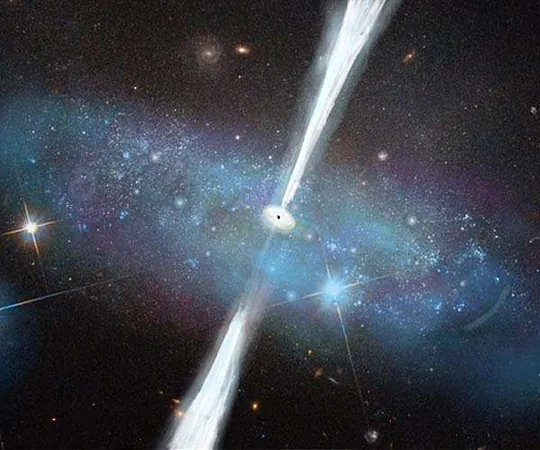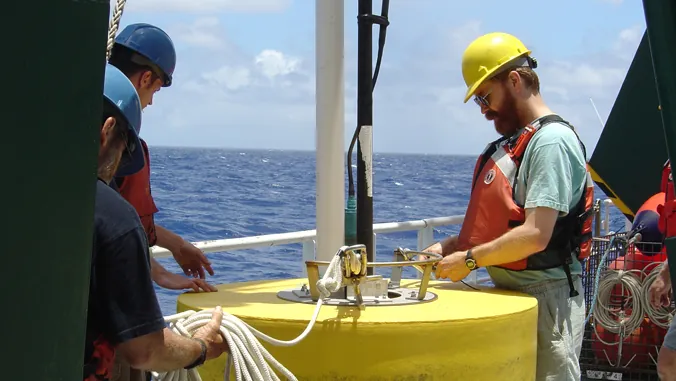
Groundbreaking Study on Supermassive Black Holes: Astrophysicist Makes Strides Towards Cosmic Mysteries
2024-10-09
Author: Wei Ling
Introduction
Nico Cappelluti's journey into the cosmos began with a striking image of the Andromeda galaxy when he was just seven years old. That moment sparked a lifelong fascination with astronomy, leading him to petition his father for an amateur telescope. From the backyard of his home in Rimini, Italy, young Cappelluti embarked on a quest to explore the universe, ultimately studying astrophysics and cosmology at the University of Bologna.
Research Focus
Over nearly two decades, Cappelluti has cultivated a deep passion for understanding supermassive black holes—enigmatic cosmic phenomena with masses millions to billions of times greater than our sun. Despite their incredible allure, these colossal black holes remain shrouded in mystery. The scientific community is still grappling with questions about their origins and monumental growth.
Leading the AXIS Project
Now a prominent associate professor at the University of Miami's College of Arts and Sciences, Cappelluti is at the forefront of groundbreaking research as the scientific lead of the Advanced X-ray Imaging Satellite (AXIS) project. This initiative focuses on deciphering the enigmatic origins of supermassive black holes and how they evolve over time.
Understanding Black Holes
“While we understand how smaller black holes form through the death of stars, supermassive black holes represent one of the greatest enigmas of our universe,” Cappelluti stated. “They existed shortly after the Big Bang, yet we lack a clear explanation for their origins and massive growth.” He emphasized the crucial role these black holes play in the evolution of galaxies.
Observing Black Holes
Traditionally difficult to study due to their lack of light emission, black holes can be observed indirectly through the radiation they emit, particularly in the form of X-rays. This is where AXIS comes into play. Currently in development, AXIS will serve as an advanced X-ray telescope, allowing scientists to view black holes in X-ray light—“which shows they are not black at all,” Cappelluti explained. The research team plans to survey hundreds of thousands of supermassive black holes from the early universe to better understand their formation and development.
Technology and Timeline
The timing of the AXIS project is particularly critical, given that NASA's Chandra X-ray Observatory, which has been operational for 25 years, is now showing its age. Under construction at the Goddard Space Flight Center, AXIS is set to be launched from the Kennedy Space Center in Florida and will operate in low Earth orbit. Cappelluti and his team are not only looking forward to the extensive data access that will benefit their research but also to the unparalleled opportunities AXIS will provide to students aspiring to break into the field of astrophysics.
Broader Goals of AXIS
Beyond the primary goal of studying black holes, the AXIS project encompasses two additional pillars aimed at exploring how gas, metals, and dust circulate within galaxies and understanding the power sources of various explosive cosmic events. This multifaceted approach aims to unravel the complex dynamics of the universe.
Funding and Future Missions
AXIS is currently one of two missions selected by NASA for further study, with both proposals receiving $5 million for a 12-month concept study. Following an evaluation phase, one project is expected to secure funding for construction, with a launch anticipated in 2032. The companion proposal focuses on filling gaps in the study of far-infrared wavelengths, acting as a vital link between established observatories like the James Webb Space Telescope and radio telescopes.
NASA's Explorers Program
This initiative is part of NASA's new class of astrophysics missions called Probe Explorers, designed to foster innovative methods for cosmic exploration. "NASA's Explorers Program fosters some of the most creative ideas for missions that help us reveal the mysteries of our universe," remarked Nicola Fox from NASA's Science Mission Directorate.
Conclusion
For Cappelluti, AXIS symbolizes the culmination of his dreams and represents a potential milestone in his career. The quest to unveil the secrets of supermassive black holes is not just a scientific pursuit; it offers profound insights into the nature of our universe and the forces that shape it. Stay tuned as this thrilling exploration unfolds, inching closer to comprehending the unsolved mysteries of the cosmos!



 Brasil (PT)
Brasil (PT)
 Canada (EN)
Canada (EN)
 Chile (ES)
Chile (ES)
 España (ES)
España (ES)
 France (FR)
France (FR)
 Hong Kong (EN)
Hong Kong (EN)
 Italia (IT)
Italia (IT)
 日本 (JA)
日本 (JA)
 Magyarország (HU)
Magyarország (HU)
 Norge (NO)
Norge (NO)
 Polska (PL)
Polska (PL)
 Schweiz (DE)
Schweiz (DE)
 Singapore (EN)
Singapore (EN)
 Sverige (SV)
Sverige (SV)
 Suomi (FI)
Suomi (FI)
 Türkiye (TR)
Türkiye (TR)